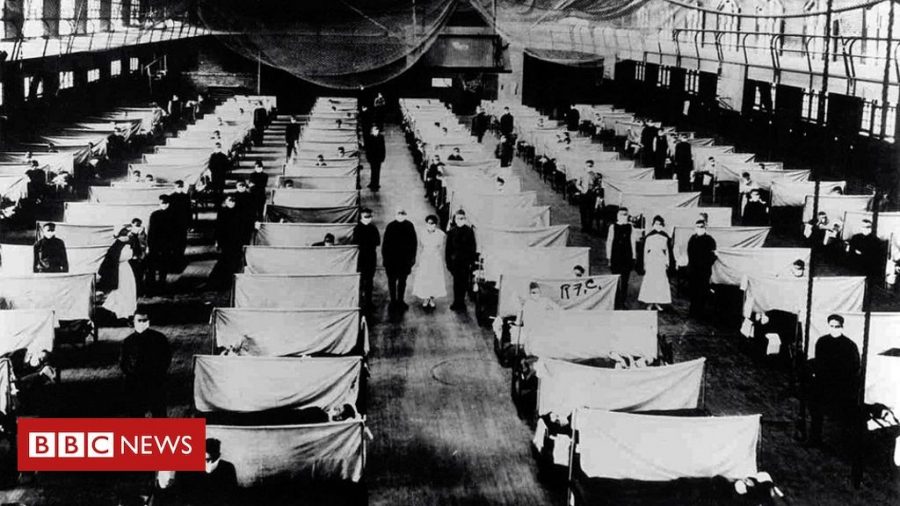The Pandemic of 1918
A flu pandemic takes place when a new, severely harmful influenza strain appears and little or no people are immune. The flu then spreads from person to person all around the planet. The Influenza pandemic of 1918, known as the deadliest in history, did just that. The Pandemic of 1918 infected about 500 million people worldwide which is about one-third of the planet’s population. The flu virus was highly contagious. It could spread when a person couged, sneezed, talked, or when a person touched something with the virus on it. During this time there weren’t any successful drugs or vaccines to treat people with this illness. Schools were shut down and businesses were crushed as bodies started to pile around the world.
The first wave of the 1918 pandemic seemed mild; however, during the second wave people who were infected died within days or even hours of contracting symptoms. This caused the average life expectancy in America to drop by a dozen years within just one year. Something unique about the 1918 flu was that it affected young people, a group who normally resisted viruses. When the 1918 pandemic hit, doctors and scientists didn’t know what caused it let alone how to treat it. What made it even more difficult was that World War I left America with very little physicians and health workers. Hospitals became so overcrowded that school and private buildings were used as makeshift hospitals. In some communities, officials ordered quarantines, people to wear mask, and shut down public places. Entire families were wiped out and funeral parlors were overwhelmed causing people to have to dig graves for their own family members.
In the summer of 1919, the flu pandemic ended because people with it either died or became immune. Ninety years later researchers find out what made the pandemic of 1918 so deadly. A group of three genes enabled the virus to weaken a victim’s bronchial tubes. Although none as deadly, several flu pandemics occurred since 1918. The pandemic of 1918 killed 20 to 50 million people but is also called the “forgotten pandemic” because it was overshadowed by the fatality of World War I, covered up by news blackouts and bad record keeping.



